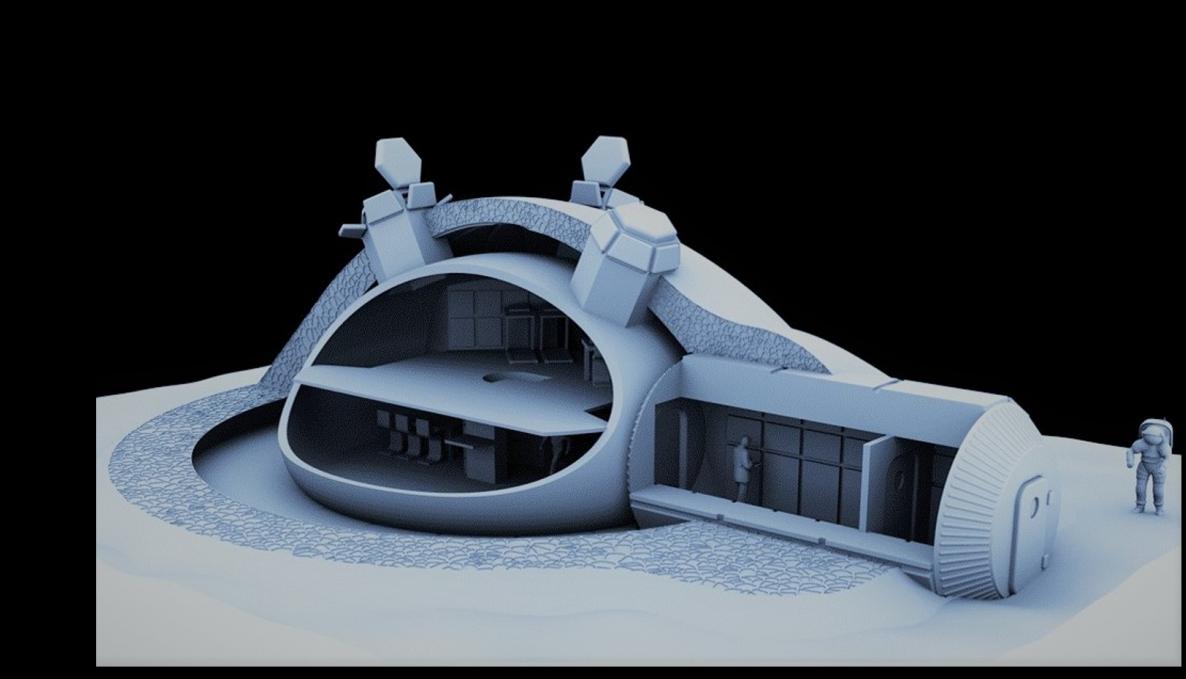50 years after APOLLO 11 launch: plans for living on the moon call for 3d printing technology and lunar REGOLITH BUILDING blocks. SANT’ANNA school researchers participate in the esa project for human settlement on the moon

Over the past decades, concepts using lunar regolith as main building material for living modules on the Moon have become the most promising approach to create a mixture similar to concrete with the lunar soil and other terrestrial materials. Making a Moon base construction for semi-permanent settlement will open the path to long-term space missions and challenging scientific projects. 3D-printing technologies developed for architectural design (modular pods) on the Moon, will provide a sustainable shelter for astronauts. The architecture and the configuration of pods will be designed to meet the Moon settlement building objectives such as mass efficiency, radiation shielding and robustness to environmental stresses.
The Sant’Anna School is the only higher education institution in Italy involved in the European Space Agency (ESA) project aimed at assessing the concept of 3D printing technology for building habitats on the Moon using lunar regolith (Regolith, a region of loose unconsolidated rock and dust that sits atop a layer of bedrock. On Earth, regolith also includes soil, which is a biologically active medium and a key component in plant growth. Regolith serves as a source of other geologic resources, such as aluminum, iron, clays, diamonds, and rare earth elements. It also appears on the surfaces of the Moon, other planets, and asteroids; however, the material found on other celestial bodies explored so far does not contain soil. The word is the Greek term for “blanket rock”). A patented (by Enrico Dini, the founder of Monolite UK Limited) 3D-printing technology, named D_Shape, has been applied.
The lunar soil will play a key role in the in-situ resource utilization. Its high metallic oxides content could offer a sustainable construction material via a sintering process. By means of solar concentration, microwaves and radial heating elements, this process would create solid building elements that will allow scientists to have a permanent lunar outpost with a limited amount of upload from Earth.
Under the supervision of Engineer Valentina Colla (TeCIP Institute - Perceptual Robotics Laboratory), the Sant’Anna School research team is focusing on the D-Shape printer, with a mobile printing array of nozzles to spray a magnesium-based binding solution onto a sand-like building material. The Lunar Outpost project will consider re-engineered D_Shape as a robot, autonomous candidate for 3D printed construction using lunar regolith viscous liquid that freezes on contact with lunar environment to form the foundations, walls, and interiors of structures. This 3D-printing technology was assessed through a lunar regolith simulant, made from the ashes of the Bolsena volcano.
The tests have provided the groundwork for collaborations with ESA and NASA. The European and American cooperation among government, the private sector and academia has led to a new Statement of Intent (signed in March 2019) to coordinate joint science research about the Moon. The statement highlights a common interest in accessing the Moon, driven by scientific discovery and European expertise.
The paper authored by G. Cesaretti, E. Dini, X. De Kestelier, V. Colla and L. Pambaguian, "Building components for an outpost on the Lunar soil by means of a novel 3D printing technology”* is published in journal Acta Astronautica, (2014), Vol. 93: 430-450.







